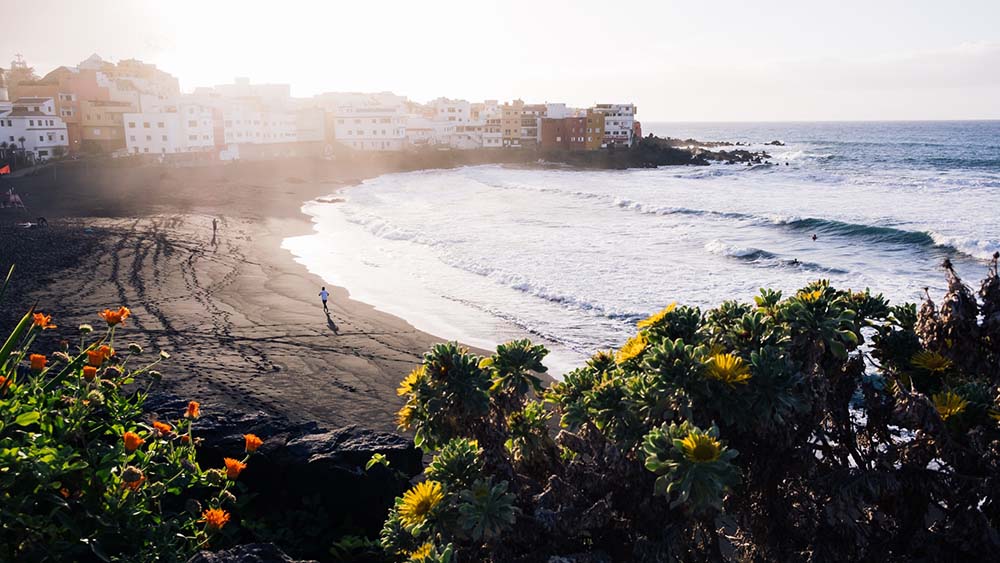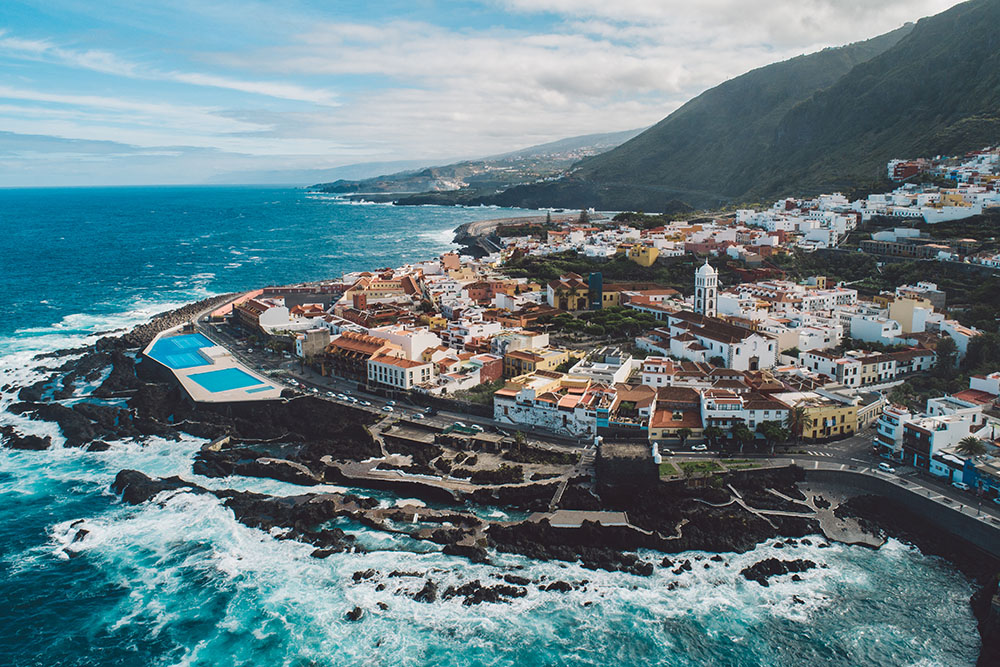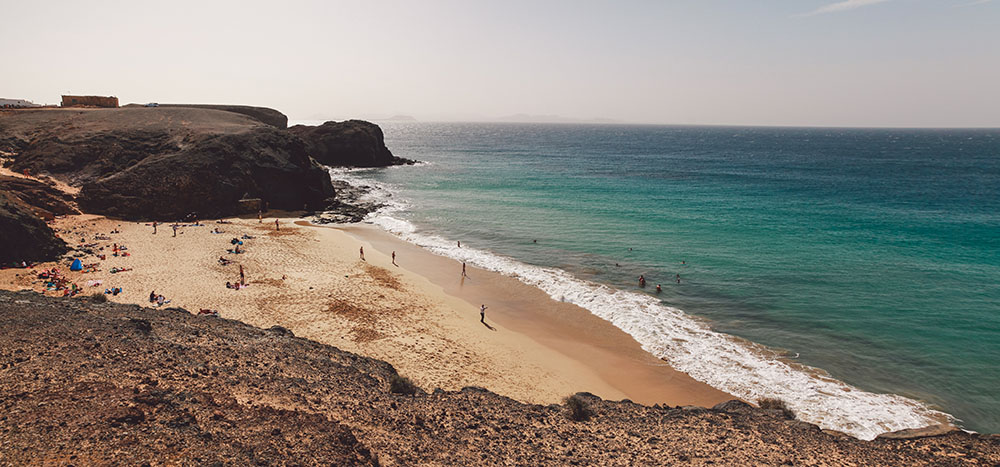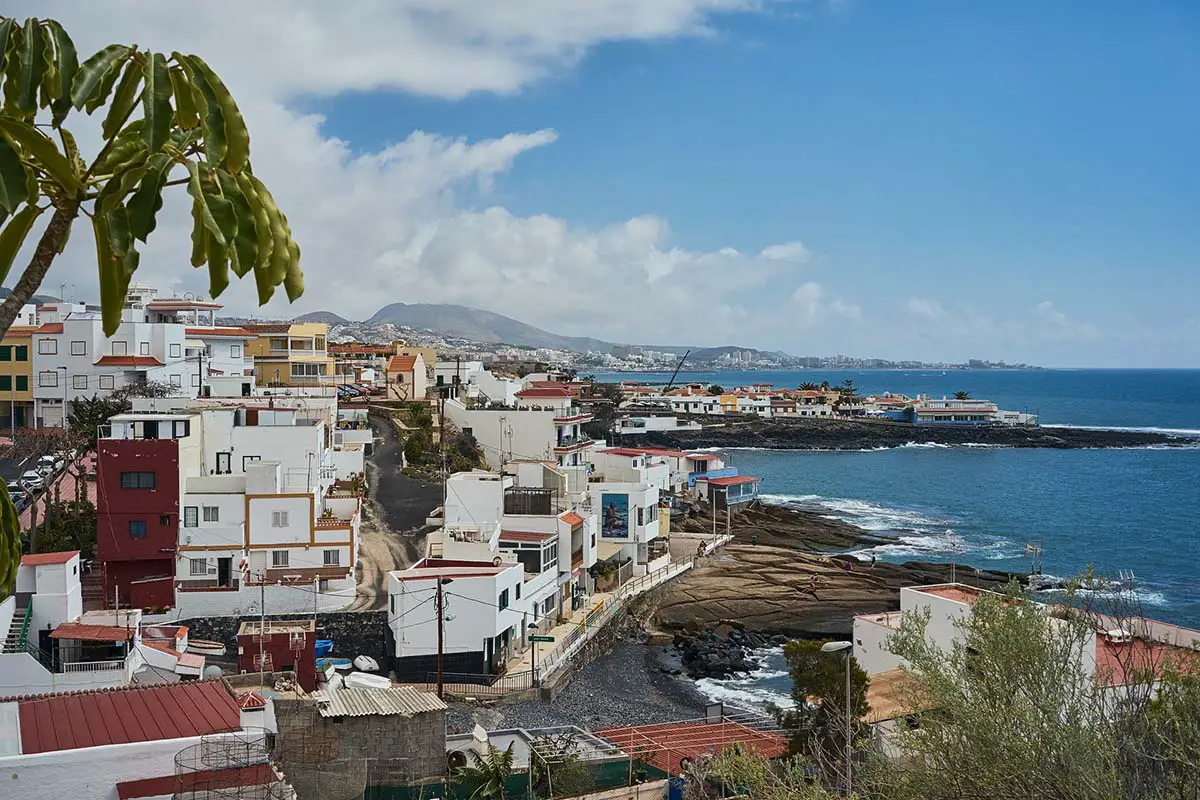The Canary Islands have a mild climate; they are located just north of the equator. They are close to the coast of Morocco and Western Sahara, so you’re exposed to the warm ocean currents and the trade winds that blow constantly from the northeast. They are also subject to the trade winds, which blow constantly from the northeast. The Canary Islands belong to Spain; there are seven major islands (Tenerife, Fuerteventura, Gran Canaria, Lanzarote, La Palma, La Gomera, and El Hierro) plus some smaller islands and islets.
Are Canary Islands Tropial?
The Canary Islands have a subtropical climate, which is mild and pleasantly dry throughout the year. Its maximum temperatures vary between 20 °C and 30 °C while its minimum temperatures vary between 15°C and 21°C.
The Canary Islands are the sunniest place in Europe, with almost 3,000 hours of sunshine each year and long, bright days making it almost an eternal spring.
The eastern islands of the archipelago are semi-arid, while the western ones get more rain. The climate of the islands of the archipelago varies between a mild and humid climate and a hot and dry climate with warm temperatures. These types of climate vary according to the exposure of each island compared to the North-East Trade Winds.
However, in all the Canary Islands, the summer is sunny. The rains are quite low, the annual averages vary between 100 and 550 mm, the rainy seasons are the winter months between December and February.
Seven major islands
The Canary Islands are a Spanish archipelago located just off the northwest coast of Africa, in the Atlantic Ocean. The islands are known for their mild climate, which is due to the fact that they are located near the Sahara desert. The Canaries are made up of eight major islands, and seven of them are inhabited.
The largest and most populous island is Tenerife, followed by Gran Canaria seen to inhabitants.
The other islands are Fuerteventura, La Palma, La Gomera, El Hierro, Lanzarote, and La Graciosa.

The climate on the Canary Islands is typically warm and sunny year-round with mild winters. The average annual temperature is about 20 degrees Celsius (68 degrees Fahrenheit), but it can vary depending on the island. The coolest month is January, while the warmest months are July and August. The average rainfall varies from island to island, but it’s generally not very high. Most of the rain falls between October and April.
The hottest month of the year is August when the average temperature is about 25-27 degrees Celsius. However, the subtropical climate offers sunshine throughout the year and the winter months are equally popular with visitors.
The climate on the Canary Islands is temperate, with average temperatures ranging from 18-25 degrees Celsius (64-77 degrees Fahrenheit). The islands receive a lot of sunshine, with an average of 3,000 hours of sunshine per year. Rainfall is moderate, with an average of 600-1,200 mm (23.6-47.2 inches) per year. The rainy season is from October to April, but it doesn’t rain every day.
The Canary Islands are a popular tourist destination for people who want to escape the cold winters of northern Europe. The islands have a warm and sunny climate, with average temperatures in the mid-20s Celsius (mid-70s Fahrenheit). The islands are also known for their beautiful scenery and diverse landscape. So if you’re looking for a place to escape the cold winter weather, the Canary Islands are a great option.
Microclimates in the Canary Islands
The Canary Islands have good weather overall, but not all of them are equal. The islands with mountains in the interior such as Tenerife and El Hierro have microclimates depending on slope exposure and altitude. The northern slopes, above which the trade winds are forced to rise, and by doing so, cool down and condense into clouds, rain, or mists which can also cause drizzle.

There are seven beautiful islands in the Canary Islands, and each is best suited to a different type of person. Those seeking the sea and beaches may prefer the eastern islands of Lanzarote and Fuerteventura, while those who like cities and interesting places will love the main island, Tenerife. Gran Canaria is great for those who love hiking and nature, La Palma is a good choice for those who appreciate peace, and the smallest island of El Hierro is great for those who want to escape the hustle and bustle.
No matter which island you choose, you’re sure to enjoy the wonderful weather, stunning landscapes, and friendly locals. So pack your bags, and get ready for an amazing holiday in the Canary Islands!
When to go to the Canary Islands
If you are looking to escape the cold weather, you should consider visiting the Canary Islands at any time of the year. You can visit the Canary Islands throughout the year since they have a very mild climate. With a mild and constant temperature throughout the year, you will always have a great experience in one of the most visited Spanish archipelagos.
During the summer months, temperatures are much higher than in the other seasons, and it’s not uncommon for days to be over 30 degrees C (86 F) with high humidity, especially during the hottest months of June, July, and August. The weather here in early September is not quite like that of early spring, and it is not uncommon to have a few cloudy days, but the sea is still warm in May, and will gradually get warmer during the next few months.

Tourists from mainland Europe, however, who arrive this time of year to escape the European winter, usually find a pleasantly sunny climate all year round, although it’s also windy and rainy in the spring, and the sea temperature is cold in May and will start warming up gradually in the following months.
When to go the Canary Islands
If you are looking to escape the cold weather, you should consider visiting the Canary Islands at any time of the year. You can visit the Canary Islands throughout the year since they have a very mild climate. With a mild and constant temperature throughout the year, you will always have a great experience in one of the most visited Spanish archipelagos.
During the summer months, temperatures are much higher than in the other seasons, and it’s not uncommon for days to be over 30 degrees C (86 F) with high humidity, especially during the hottest months of June, July, and August. The weather here in early September is not quite like that of early spring, and it is not uncommon to have a few cloudy days, but the sea is still warm in May, and will gradually get warmer during the next few months.

Tourists from mainland Europe, however, who arrive this time of year to escape the European winter, usually find a pleasantly sunny climate all year round, although it’s also windy and rainy in the spring, and the sea temperature is cold in May and will start warming up gradually in the following months.
Average temperatures per month
| Month | Average temp | Average rain (mm) |
| January | 18 C° | 19 |
| February | 18 C° | 22 |
| March | 19 C° | 14 |
| April | 19 C° | 19 |
| May | 21 C° | 4 |
| June | 22 C° | 3 |
| July | 24 C° | 2 |
| August | 25 C° | 12 |
| September | 23 C° | 19 |
| October | 23 C° | 35 |
| November | 21 C° | 49 |
| December | 20 C° | 37 |
The weather during winter in the Canary Islands

Winter is mild in the Canary Islands; the average minimum temperature is 15° C, and the average maximum is 20° C. It’s possible to have cold days in the mountains of the islands of El Hierro and La Palma, but on the rest of the islands, you’ll see similar weather to that of the European spring. It’s also possible to see snowfall on the summit of the Teide volcano in the winter months.
Atlantic depressions can cause infrequent stormy periods with disturbed weather and higher rainfall. Winter rainfall varies between islands and is higher in the northern parts of the archipelago which are more exposed to the northeast trade winds. Las Palmas on the exposed northern side of Gran Canaria sees 46 mm rainfall during February while the sheltered Arrecife on Lanzarote sees just 14 mm.
If you’re looking for a winter sun holiday, the Canary Islands are a great option – you’ll enjoy sunny weather and lower temperatures than you would in the Mediterranean. Be sure to pack some warm clothes, though – it can get a bit chilly at night.
The weather during summer in the Canary Islands
Summer is hot in the Canary Islands, with average temperatures of around 25° C. However, it’s not as hot as you might think – the humidity is quite low, so it’s not uncomfortable to be outside. The only place where it’s really hot is on the island of Fuerteventura, where temperatures can reach as high as 40° C.
The sun shines for around 9-10 hours a day during the summer months, making it a great time to visit. The hottest days are usually in August when the winds from the Sahara desert can cause temperatures to reach 33° C. However, the trade winds usually keep things comfortable, and there’s always the ocean to cool you down.
The islands vary in climate, with the mountainous islands receiving heavy rainfall and the flatter islands being dry and hot. The heavy rainfall on the mountainous islands is due to the proximity of the Tropic of Cancer, which causes warm air from the Sahara to blow towards the islands. This wind, known as the sirocco, or Calima as the locals say, brings heavy sand storms to the islands. The sirocco also causes dry, hot conditions on the flatter islands, as it blows away any moisture that may be present. The heavy rainfall on the mountainous Canary Islands helps to offset the dry conditions on the flatter ones, making them a fairly comfortable place to live.
Being so
So overall, the Canary Islands have great weather all year round – it just depends on what you’re looking for. If you want hot weather and lots of sunshine, go in summer. If you want milder temperatures and a bit more chance of rain, go in winter.
Tenerife is also a beautiful island that is perfect for cycling. It has many great cycling routes that wind through the mountains. Mount Teide is the tallest mountain on the island and it is a great place to ride a bike. The views from the top of the mountain are amazing.
There are also many other great cycling routes on the island. Tenerife is a great place for cyclists of all levels. There are routes for beginners and for experienced cyclists.
Hours of sunshine
In the Canary Islands, there is an abundance of sunlight throughout the year. However, from the end of October to March, there are periods when these low pressure systems affect the islands. As for summer, in addition to the cloud banks that can form on the Atlantic, on the northern coast, and especially on the mountain slopes exposed to the north, local clouds and fogs can form. On the southern coasts, where the sunniest places are, the average daily sunshine hours are highest.
These are average daily sunshine hours at the Tenerife South Airport (Tenerife Sur or Aeropuerto Reina Sofia)
| Month | Average Sunshine | Total Hours |
| January | 6.5 | 205 |
| February | 7.5 | 205 |
| March | 8 | 240 |
| April | 8 | 235 |
| May | 8.5 | 260 |
| June | 9 | 270 |
| July | 10 | 315 |
| August | 9.5 | 295 |
| September | 7.5 | 230 |
| October | 7 | 220 |
| November | 6.5 | 195 |
| December | 6.5 | 200 |
| Yearly | 7.9 | 2870 |
The hottest of the Canary Islands

Lanzarote on the other hand is one of the hottest and most arid of the Canary Islands. It is closest to the Sahara Desert and because it is one of the lowest-lying islands, the Sahara can bring high temperatures and fine sand to Lanzarote. This causes heatwaves at times. So Lanzarote, being the warmest Canary Island is the one to visit if you’re looking for some heat.
Which of the Canary Island is the largest?
Tenerife, Fuerteventura, Gran Canaria, Lanzarote, La Palma, La Gomera, El Hierro, and La Graciosa are the eight main islands (largest to smallest in area). Alegranza, Isla de Lobos, Montaña Clara, Roque del Oeste , and Roque de Este are small uninhabited islands that are administratively a part of Gran Canaria.
The size itself doesn’t affect the weather or climate, but the arid, mountainous areas are. Having Mount Teide in the middle of Tenerife means that the island has a varied climate. It’s usually warmer on the southern side and lusher and greener on the northern parts of the island.
The islands were formed by volcanic eruptions, with the last one happening on La Palma in 1971. The Canary Islands are also known as the “Islands of Eternal Spring” because the average temperature is about 20 degrees Celsius (68 degrees Fahrenheit) all year long.

